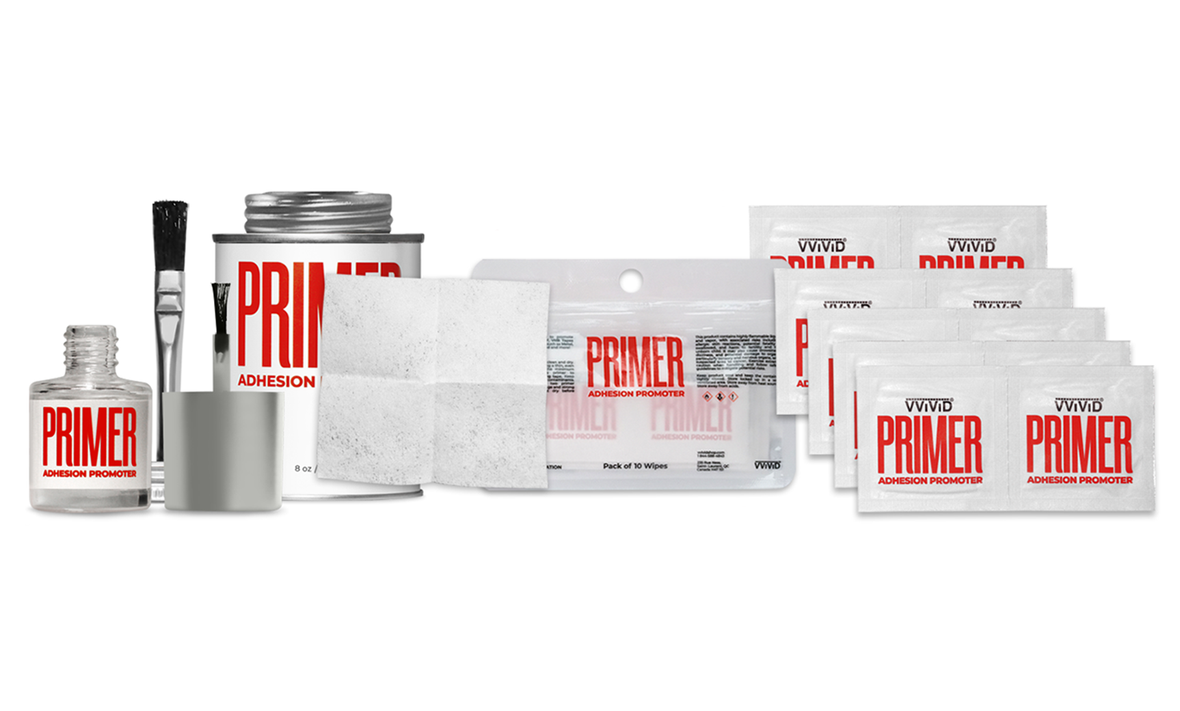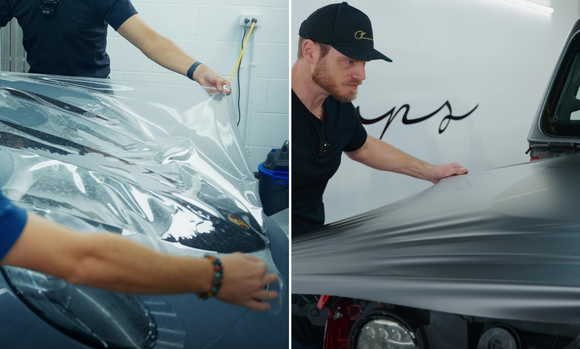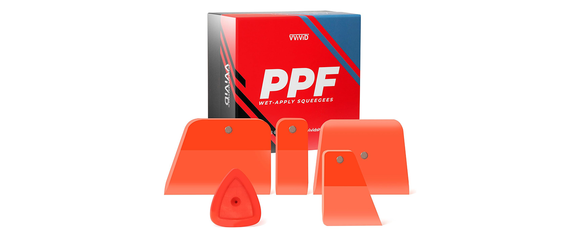
The Pros and Cons of Primer Adhesion Promoters
In the world of automotive customization and protection, achieving a perfect application is crucial. One tool that often comes up in discussions is the primer adhesion promoter. This product can significantly enhance the bond between surfaces, making it an essential component in many applications. However, like any tool, it comes with its own set of advantages and disadvantages. In this blog, we will explore the pros and cons of using primer adhesion promoters for vinyl wraps, paint protection films (PPFs), VHB tapes, and other products, and discuss when they should be used.
What is a Primer Adhesion Promoter?

Primer adhesion promoters are substances applied to a surface to increase the adhesion of films, tapes, and other coatings. They work by chemically altering the surface to create a stronger bond between the substrate and the adhesive material. These promoters are commonly used in automotive applications, as well as in various industrial and commercial settings.
Pros of Primer Adhesion Promoters

-
Enhanced Adhesion:
-
Stronger Bonds: The primary benefit of adhesion promoters is the significant increase in bond strength. This is especially important for applications involving vinyl wraps and PPFs, where a secure attachment is critical for durability and longevity.
-
-
Improved Durability:
-
Longevity: Products like VHB tapes can last longer when used with an adhesion promoter, as the bond is less likely to degrade over time.
-
-
Versatility:
-
Wide Range of Applications: Adhesion promoters can be used with various materials, including plastics, metals, and glass. This makes them suitable for a broad range of projects, from automotive to industrial applications.
-
-
Better Surface Compatibility:
-
Difficult Surfaces: Some surfaces, such as low-energy plastics or textured substrates, can be challenging for adhesives to bond to. Adhesion promoters make it easier to work with these difficult surfaces, ensuring a strong attachment.
-
Cons of Primer Adhesion Promoters
-
Complex Application:
-
Preparation and Application: Applying adhesion promoters requires careful surface preparation and precise application. If not done correctly, it can lead to uneven bonding or even damage to the surface.
-
Time-Consuming: The extra step in the application process can be time-consuming, which might not be ideal for quick projects or high-volume operations.
-
-
Potential for Damage:
-
Residue: Some adhesion promoters can leave a residue that is difficult to remove if you need to reposition or remove the applied material.
-
-
Health and Safety Concerns:
-
Chemical Exposure: Many adhesion promoters contain volatile organic compounds (VOCs) and other chemicals that can be hazardous if inhaled or if they come into contact with skin. Proper ventilation and protective equipment are necessary when using these products.
-
When Should Primer Adhesion Promoters Be Used?

-
High-Stress Applications:
-
Automotive Wraps and PPFs: For vehicles that are exposed to harsh weather conditions or require high durability, using an adhesion promoter can ensure that the vinyl wrap or PPF remains securely attached.
-
Heavy-Duty Industrial Uses: In industrial applications where the bond needs to withstand heavy loads or stress, adhesion promoters can provide the necessary strength.
-
-
Difficult Surfaces:
-
Low-Energy Plastics: Materials like polyethylene or polypropylene have low surface energy, making it difficult for adhesives to bond. Adhesion promoters can significantly improve adhesion on these surfaces.
-
Textured or Contaminated Surfaces: Surfaces that are not smooth or have contaminants can benefit from the use of adhesion promoters to achieve a strong bond.
-
-
Extreme Conditions:
-
Outdoor Applications: For products that will be exposed to extreme weather conditions, using an adhesion promoter can enhance resistance to elements such as UV light, rain, and temperature fluctuations.
-
High-Temperature Environments: In applications where the bond will be subjected to high temperatures, adhesion promoters can help maintain the integrity of the adhesive.
-
-
Critical Projects:
-
Permanent Installations: For installations where a permanent bond is required, such as signage or structural components, adhesion promoters can ensure long-lasting adhesion.
-
High-Value Projects: In projects where failure is not an option due to high costs or safety concerns, adhesion promoters provide an extra layer of security.
-
Conclusion
Primer adhesion promoters are powerful tools that can significantly enhance the bond strength and durability of adhesives used in vinyl wraps, PPFs, VHB tapes, and other products. However, they come with their own set of challenges, including additional costs, complex application processes, and potential health risks. By carefully considering the specific needs of your project and weighing the pros and cons, you can determine whether using an adhesion promoter is the right choice for your application.


